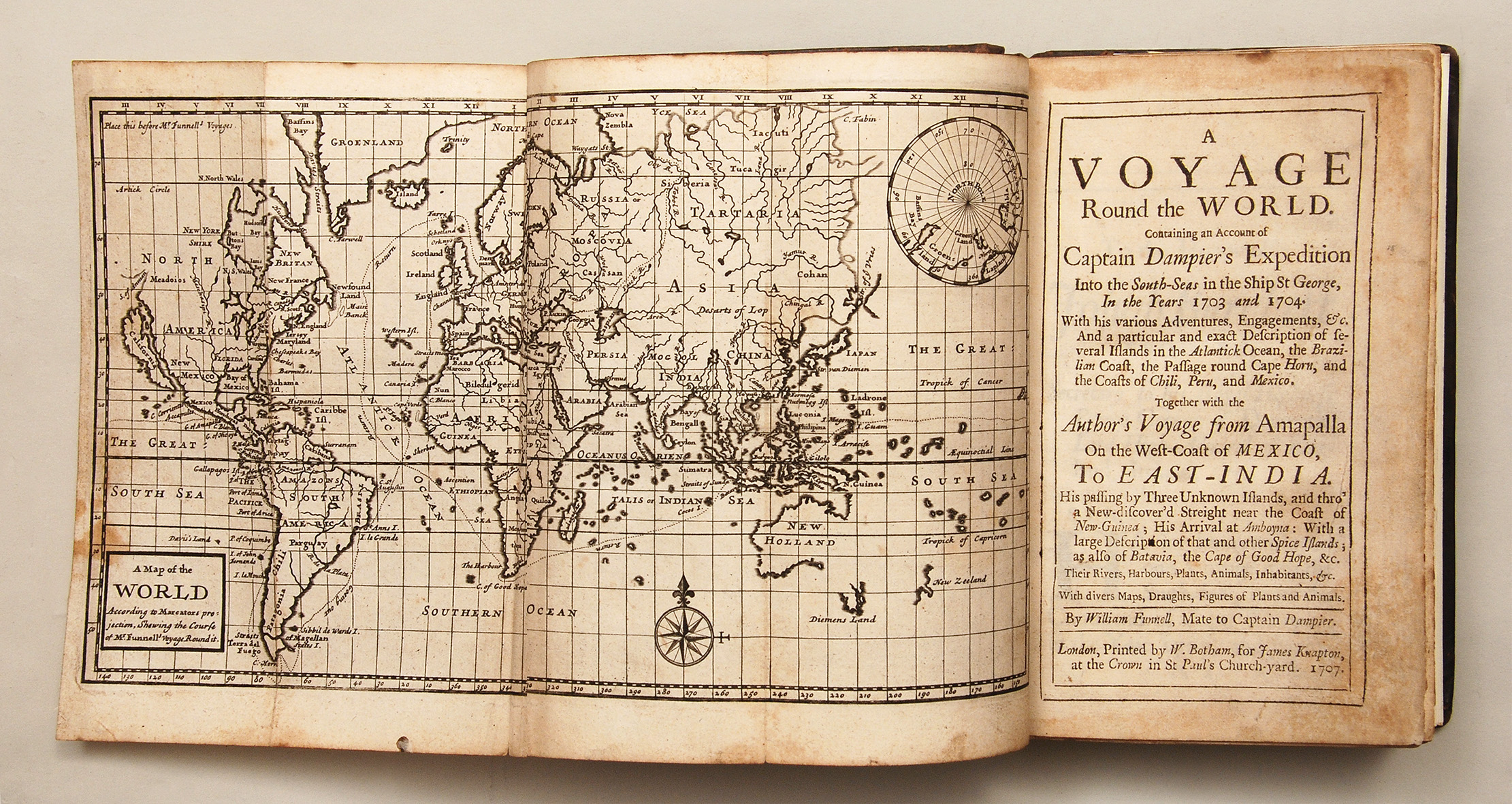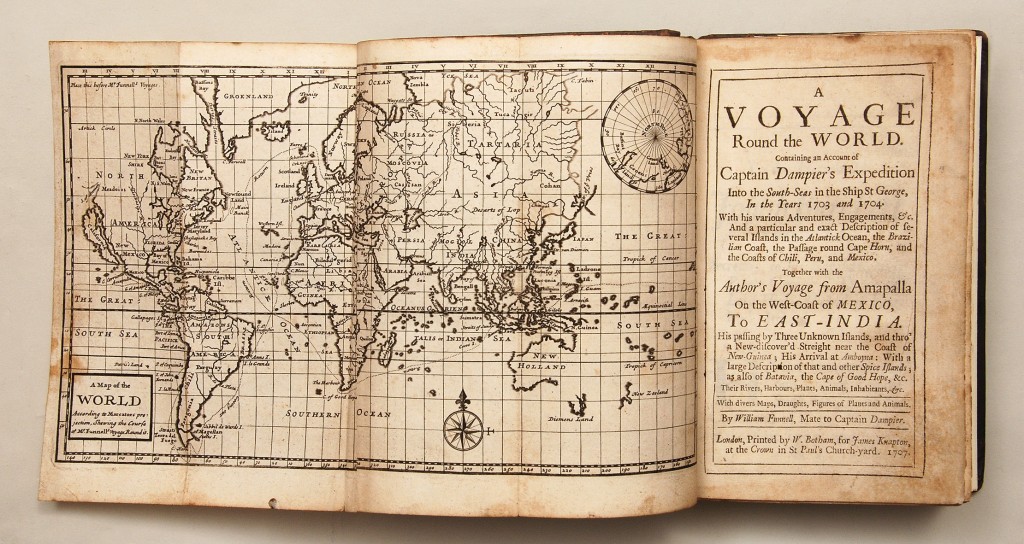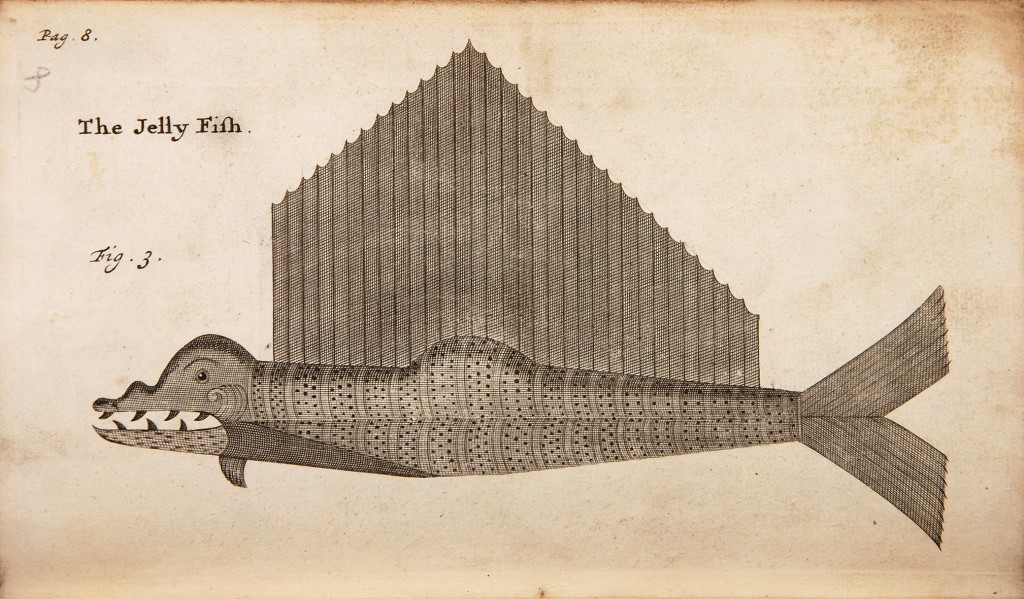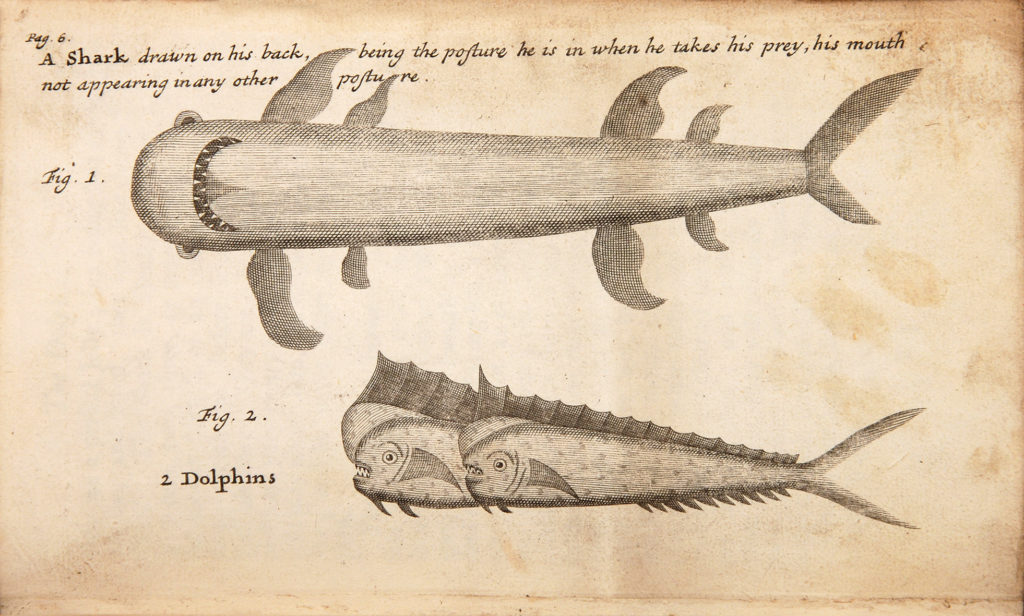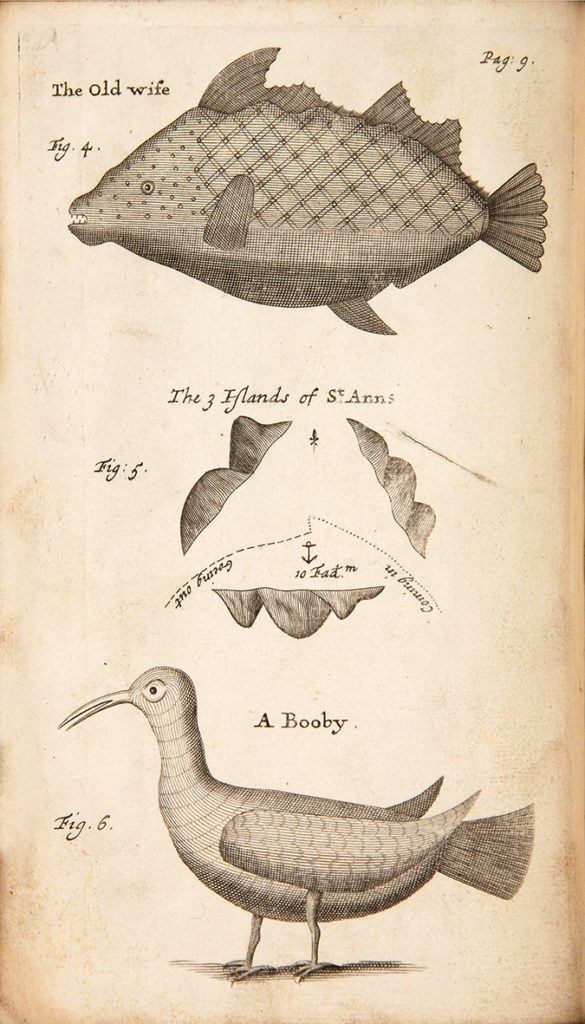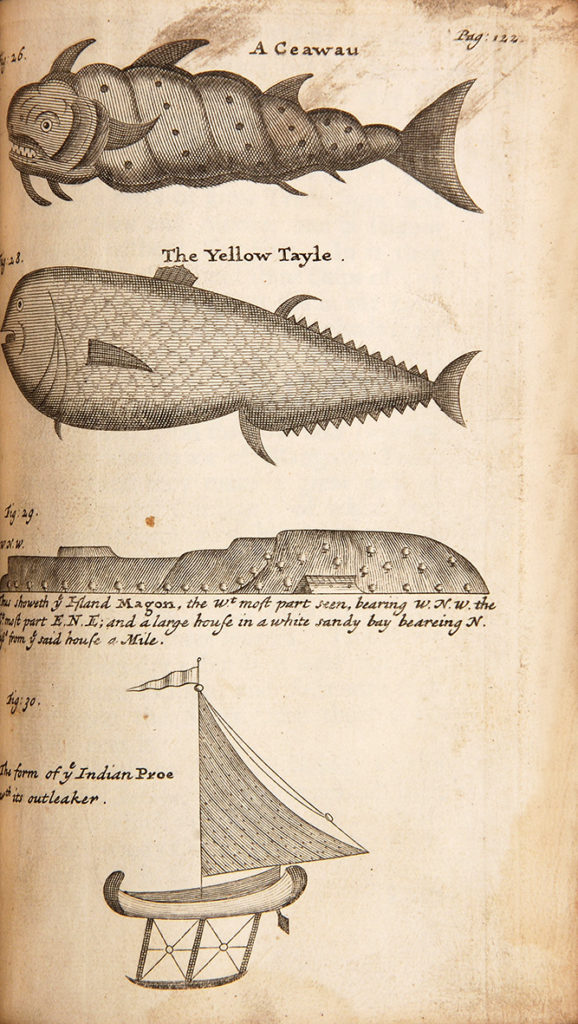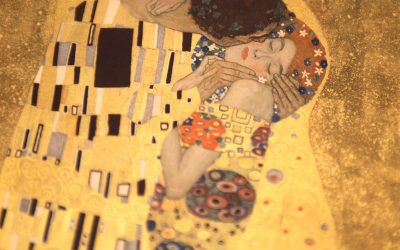In August of 1706, William Funnell, the First Mate on the ship St. George, landed in England after a three-year voyage around the world.
Organised by Captain William Dampier, the goal of this privateering adventure was to plunder Spanish vessels and coastal towns, but Dampier’s poor leadership led to division, mutiny, and the ultimate failure of the expedition (with Dampier spending time imprisoned on Jakarta as a suspected pirate).
Funnell was one of only eighteen crew members to complete the entire circumnavigation, and, arriving home in England before Dampier, took the opportunity to publish his own account of the trip titled A Voyage Round the World (1707) – BOOK SOLD. Though primarily a critique of Dampier’s captaincy, it also provided a detailed account of the entire voyage, including excellent sections on the west coast of the Americas and the Dutch East Indies, and a fascinating set of plates depicting natural specimens and coastlines.
What makes these plates so interesting is that they appear to have been engraved directly from Funnell’s own sketches. The purpose of the voyage wasn’t scientific, and Funnell wasn’t a trained naturalist or artist, or even an amateur enthusiast. But ships’ officers of the early modern period were encouraged to keep detailed logs encompassing everything from their latitude and longitude to descriptions and drawings of the people and natural curiosities they encountered. These accounts were often published on the crew’s return, but usually the engravers of the plates altered the drawings, relying on illustrations in books, preserved specimens in collections, and their own knowledge and imaginations to improve the sometimes crude sketches provided by the sailors. In this case, however, the engravings of Funnell’s drawings retain the immediacy and naive charm of the originals.
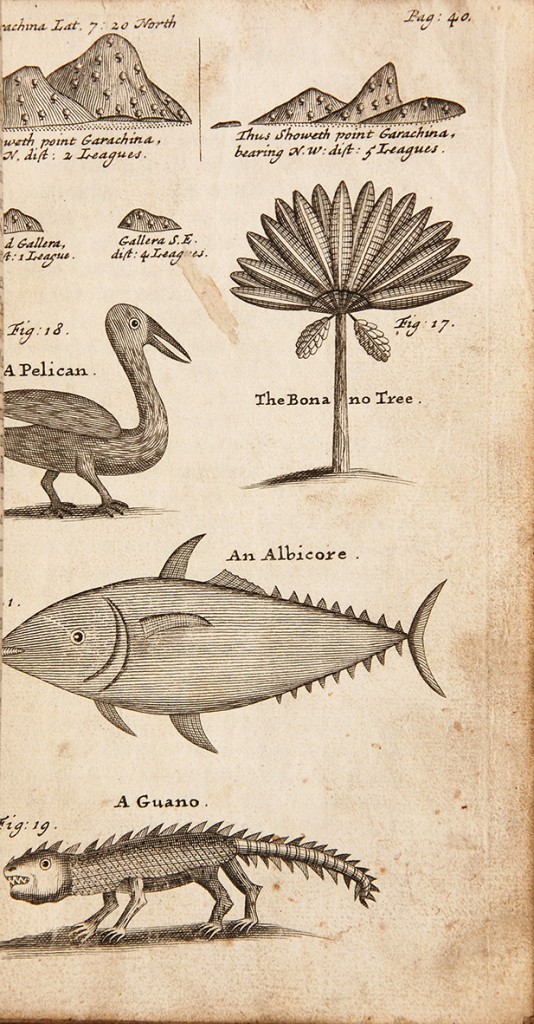
Animals and plants of Point Garachina in what is now eastern Panama. A pelican, an Albicore tuna, and a “guano” lizard.
Most of the species encountered by Funnell are immediately recognisable, either by name or image. The albacore tuna above is a reasonably accurate depiction, and the pelican, while not 100% anatomically correct, certainly exudes a certain pelican-ness.
Others are bit of a mystery. This “Jelly Fish” looks more like a sailfish or marlin, though the one Funnell saw was so small that it must have been a juvenile.
Funnell described the animal this way:
The Jelly-Fish was about fourteen Inches long, and about 2 inches deep; with a very sharp set of teeth, a very curious sparkling Eye, a long extended Mouth, a monstrous high Fin on his Back, being of a flimsy substance, only the Ribs which stretched it out (being thirty two in number) were firm and stiff. He had one small Fin under his Jaw, of the same flimsy substance. That part of him which is without small spots, is a perfect green Jelly, whence he was called by us a Jelly-Fish: the rest of him was firm, of a Silver colour, with small spots, and streaks or partings, as is esprest in the Figure.
The dolphins above are not true dolphins, but a type of fish commonly called dolphinfish, or mahi-mahi.
Funnell described their pursuit of flying fish, writing that they are “so nimble, as to catch them when they light in the Water to wet their Wings, or rather Fins… It is very pretty to see what shifts and turns they will make to get clear of their greatest Enemy the Dolphin; and rather than be taken by them, they will often fly into a ship…”.
The old wife fish illustrated above only vaguely resembles the species known by that name today, and looks more like a parrotfish. This could be a case of a poorly executed drawing, but in the 17th and 18th centuries most species were not as completely differentiated and catalogued as they are today, and it’s more likely that more than one species was called the same thing, or that Funnell didn’t have enough information to distinguish species. He describes this particular type of fish as deep blue with light blue fins tipped in yellow, but notes that there is also another type of old wife described by Dampier in an earlier book.
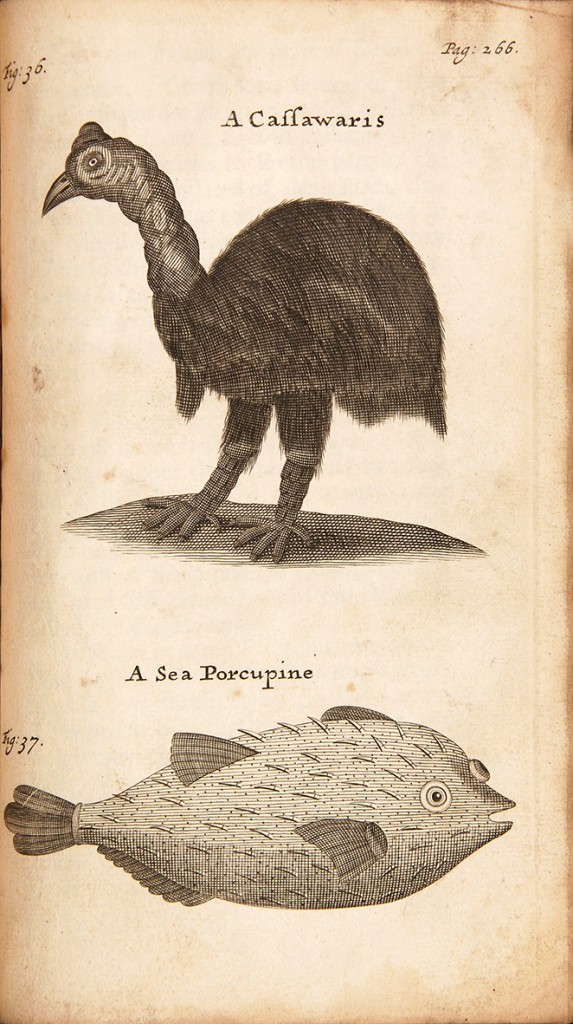
A Cassowary and a “Sea Porcupine” (puffer fish) from the Malay Archipelago or the Island of New Guinea.
Above, a cassowary with far too many toes and a delightful pufferfish.
The strangest species described by Funnell is the “Ceawau”, a fish caught near the island of Amapala on the southern coast of Honduras that appears to have an oddly coiled body, depicted in the illustration above:
The Ceawau was a Fish of about four Foot long. He had three Fins on his Back; viz. one small one at the hinderpart of his Head, a great one near the middle of his Back, and another small one towards his Tail. He had also two small ones underneath, near the Gills; and two small ones underneath, near the Tail; with two pretty large ones on each side, near the Gills. He had a large mouth, and Teeth. He was an extraordinary good Fish; and his Head, when boiled, was nothing but a pure good Jelly. He was full of small spots and Partings, as is expres’d in the Figure. And the tip of his Fins and Tail was Yellow.
I’ve done my best to identify this fish and had no luck – if anyone has an idea what it is, please leave a comment!
Click here for our complete selection of books on travel and exploration.

